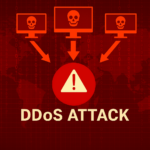Microsoft adds features and boosts Windows 11 security with KB5062553

Microsoft has released the KB5062553 update for Windows 11 24H2. Billed primarily as a security update for the operating system, it is actually more than that – much more.
As is the case with Microsoft’s monthly security updates, it also includes the non-security improvements, fixes and additions that were previewed last month. One of the key new arrivals here is the new PC-to-PC migration experience which uses the Windows Backup app to ease the process of moving to a new computer.
Short-lived ransomware group SatanLock to close down and leak data

There are large numbers of ransomware groups operating around the world, some of which have been conducting their nefarious work for years. There are older which are rather less long in the tooth, such as the recently formed SatanLock.
The group has been in existence for mere months, popping up in April this year. Responsible for a spate of attacks over a number of weeks, the ransomware group has announced that it is already shutting up shop. More than this, it plans to leak any data it has stolen.
Jack Dorsey’s latest project is the Bluetooth mesh network app bitchat

Jack Dorsey – the co-founder of Twitter and Block, and the founder of Bluesky – took to X to share some enticing details about the latest project he is working on.
Called bitchat, this is a messaging app that not only has security at its very core, but does not require internet access to work. A messaging app without internet? Dorsey explains that this is a secure, decentralized, peer-to-peer messaging app that works over Bluetooth mesh networks.
Microsoft confirms KB5060829 update for Windows 11 causes worrying Firewall errors

Microsoft has issued a warning about a recent update for Windows 11. The KB5060829 update was released late last month as a non-security preview update, and it has been found to be causing issues.
Available for Windows 11 24H2, the optional KB5060829 update has been causing Windows Firewall With Advanced Security errors to be logged by the operating system. While error message relating to a security feature are likely to result in concern and fear, Microsoft is at pains to reassure users that there is no need to panic.
Microsoft finally removes PowerShell 2.0 from Windows 11

Having previously announced the future deprecation of PowerShell 2.0, Microsoft has now released a version of Windows 11 that sees this command line shell removed.
The writing has been on the wall for this old version of PowerShell for some time, but Microsoft has – as is often the case with deprecated features – never been very clear about the precise schedule. But with the newly released Windows 11 Insider Preview Build 27891 on the Canary Channel dropping PowerShell 2.0, it is only a matter of time before other builds ditch the utility as well.
How to avoid fraud when planning your summer travel [Q&A]

As summer travel plans ramp up, so do concerns around identity theft, fraud, and safety – especially as travelers engage with everything from airlines to Airbnbs, ride shares to public Wi-Fi.
We spoke to Bala Kumar, chief technology and product officer at Jumio, to discuss the AI-powered scams threatening enterprises' customers this summer, and how businesses can ensure safe, secure, and efficient identity verification.
Microsoft acknowledges Intune issue that wipes out security customizations

Microsoft has published a warning about a problem in its Intune management software that stops customizations from being saved. Stemming from an issue in the security baseline policy update flow, an update can wipe out settings that have been put in place by administrators.
Although Microsoft has acknowledged the problem, the company is currently working on working out how to address it. In the meantime, Intune users are being told to use a workaround that could prove to be time-consuming for many.
Forget about Fake Cell Towers and Spying Threats: Android 16 Introduces New Security Features

Mobile security enhancements have become an essential part of OS developments. To make mobile security better, Google has announced that Android 16 will include a feature that detects and warns users about fake or insecure cell towers and an often-overlooked threat that can be used to spy on individuals or steal sensitive data.
This new feature is part of strategic efforts by Google to strengthen privacy protections within its mobile ecosystem. As detailed in recent reports from Android Authority, the upcoming version of Android will notify users when their devices connect to suspicious mobile networks, particularly those attempting to gather identifying information or lacking encryption.
16 Billion Passwords Exposed: Major Leak Hits Apple, Facebook and Google Users

The largest password leaks are now recorded. 16 billion login credentials, including usernames and passwords, have been exposed online. The leak impacts Apple, Facebook, Google accounts, and some other platforms that people use daily.
The breach, uncovered by researchers at Cybernews, is believed to be the work of multiple infostealer malware groups operating globally. Their investigation, ongoing since early this year, identified 30 separate datasets, each containing millions of stolen records. Many of these datasets were previously unknown, adding to the severity of this discovery.
Microsoft super-charges Windows Update so it can keep all of your apps up to date

Microsoft has launched a preview version of the Windows Update orchestration platform. This is an update to Windows Update itself which opens it up for use by third-party developers.
This means that Windows Update could soon be able to update not only Windows, but also drivers, and third-party apps. So broad is the scope of what Microsoft is working on that it feels as though Windows Update will soon be a misnomer, and a rebranding may be in order.
Microsoft releases Defender update to improve the security of your Windows installation images

Having Windows installation images is handy; they can be used to reinstall your operating system, but they are also useful when creating virtual machines. Microsoft is concerned about their safety, however.
Pointing to "a Microsoft Defender protection gap" that exists in the first hours of a freshly installed copy of Windows, the company highlights installation images that contain outdated antimalware software binaries. The solution to this problem? An update to Microsoft Defender for these images.
DDoS and IP transit: Why integration is the smart choice for modern connectivity

As Distributed Denial of Service (DDoS) attacks grow in both frequency and sophistication, organizations are being forced to re-evaluate their defensive strategies. Gone are the days when a standalone DDoS mitigation service tacked onto your infrastructure was enough for peace of mind.
The current threat landscape demands faster response times, simplified operations, and coordinated protection. A rising trend is the integration of DDoS mitigation directly with IP transit from a single provider.
Windows 11 hacked multiple times by security researchers at Pwn2Own Berlin 2025

As part of its Zero Day Initiative (ZDI), Trend Micro is holding its first Pwn2Own event in Berlin. The three day event sees security researchers testing and breaching the security of various systems, including Windows 11 and Linux.
With big money on offer, there is a great incentive for researchers to unearth vulnerabilities and show how they can be exploited. And this is precisely what happened with Widows 11; the operating system was pwned multiple times on the first day of the event, and there will be many more attempts made before it is over.
Microsoft will support Office on Windows 10 until 2028 -- but not the operating system
It has been difficult to escape the fact Microsoft is ending support for Windows 10 later this year -- on October 14 to be precise. The company has made much of issuing reminders about this date as well as endlessly pestering people to upgrade to Windows 11.
But it was not just Windows 10 that was to lose support in October. Microsoft had also said that Office (or Microsoft 365) on Windows 10 would not be supported from the same date. Now the company has had a change of heart, and will provide support for much longer than it previously announced.
Active Directory recovery: Rebuilding the forest from root to tip

After 25 years, Active Directory remains a stalwart of IT infrastructure. Supporting access for an estimated 610 million employees, it enables seamless, secure connectivity to the networks that power daily business operations worldwide. Favored by nearly 90 percent of Global Fortune 1000 companies, according to Frost & Sullivan, Active Directory has long been the primary mechanism for enabling staff to connect, collaborate, and work efficiently.
Despite the rise of cloud-based alternatives, Active Directory's scalability, compatibility, and established integration with Windows environments has ensured its continuing appeal for hybrid and on-premise infrastructures. Its unrivaled scalability and powerful centralized control make it the go-to solution for managing users, devices, and policies at scale.
Recent Headlines
Most Commented Stories
BetaNews, your source for breaking tech news, reviews, and in-depth reporting since 1998.
© 1998-2025 BetaNews, Inc. All Rights Reserved. About Us - Privacy Policy - Cookie Policy - Sitemap.